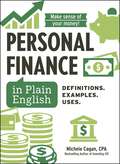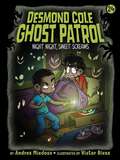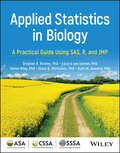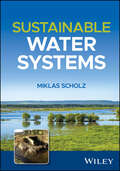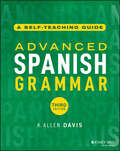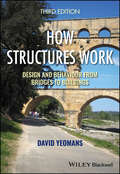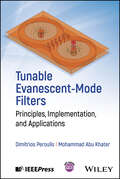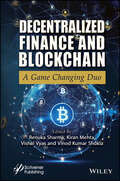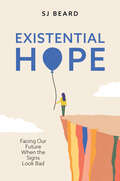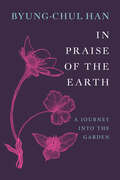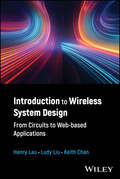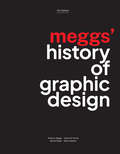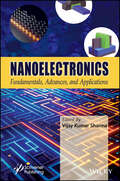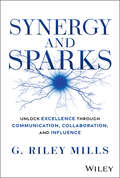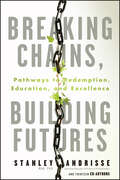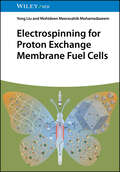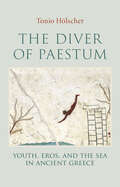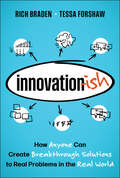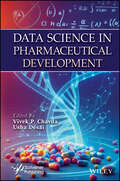- Table View
- List View
Personal Finance in Plain English: Definitions. Examples. Uses. (Financial Literacy Guide Series)
by Michele CaganDiscover the ins and outs of personal finance—in a language you can actually understand—with these clear, straightforward definitions and explanations of all things finance from income and assets to credit, loans, and debt, to stocks, bonds, money markets, and more.The personal finance book you wished you had in school! Managing your money is not an easy job, and it&’s made even more complicated by the specific terminology used in personal finance. Reading through a loan agreement, credit card terms and conditions, or a stock market report can leave even the most financially responsible people wondering what exactly does this mean? Now, Personal Finance in Plain English has the answers. You&’ll find straightforward explanations of 350 personal finance terms ranging from banking and taxes to credit cards, student loans, and mortgages, to stock, cryptocurrency, retirement planning, and more. This quick, easy-to-use glossary teaches you what the term means, how the concept works, and how it is used. Read through the chapters for a solid primer in personal finance or refer to specific definitions as needed when reviewing your financial documents. Take control of your financial goals and master the complex language of finance with Personal Finance in Plain English.
Night Night, Sweet Screams (Desmond Cole Ghost Patrol #24)
by Andres MiedosoDesmond and Andres battle Andres&’s nightmares come to life in the twenty-fourth haunted adventure in the Desmond Cole Ghost Patrol series!Here&’s the thing about nightmares: at the end of the night, they&’re all made up. All you need to do is open your eyes, and you&’re safe and snug in your own bed. That is, unless you&’re Andres Miedoso. Because all his nightmares are coming true in real life. Waking up has never been so scream-tastic! With easy-to-read language and illustrations on almost every page, the Desmond Cole Ghost Patrol chapter books are perfect for emerging readers.
The Everything Restaurant Copycat Recipes Cookbook: 200 Easy Recipes to Re-Create Your Favorite Restaurant Dishes at Home (Everything® Series)
by Kelly JaggersSkip the pricey restaurant bill and recreate your favorite dishes right at home with these 200 fast, easy-to-follow recipes that are so good people will think it&’s takeout!Visit your favorite restaurants…without waiting for a table or paying inflated prices for your meal! With 200 fast, easy, and delicious recipes, you can now recreate your favorite restaurant dishes without having to leave your house. You&’ll find iconic recipes for every meal of the day, including: -IHOP&’s Original Buttermilk Pancakes -Olive Garden&’s Bread Sticks -In-n-Out&’s Double-Double Burger -Pizza Hut&’s Stuffed Crust Pizza -Crumbl&’s Classic Pink Sugar Cookie -Southwestern Eggrolls from Chili&’s -The Pink Drink from Starbucks -And more! With these tried-and-true recipes, The Everything Restaurant Copycat Recipes Cookbook allows you to recreate popular restaurant meals as closely as possible—while still receiving the same rave reviews as the real thing—on a much smaller tab per serving.
Ligand-Binding Basics: Evaluating Intermolecular Affinity, Specificity, Stoichiometry, and Cooperativity
by Jannette CareyA concise and accessible textbook covering ligand-binding theory in chemistry, biology, and drug development In Ligand-binding Basics: Evaluating Intermolecular Affinity, Specificity, Stoichiometry, and Cooperativity, accomplished chemist Professor Jannette Carey introduces ligand binding in a thorough and practical way for those new to the topic, as well as anyone seeking a connection between theory and experiment. Using a minimum of mathematical formalism, this book offers analytical rigor while remaining accessible to non-specialist practitioners. It provides readers with the skills they need to analyze their own binding data or published results, helping them develop an intuitive grasp of ligand-binding phenomena integrated with structural and thermodynamic understanding. Topics covered include: Application of the principles of equilibrium, mass action, and mass balance to derive the basic equations that describe all binding processesRecommended approaches for plotting and graphical analysis of binding dataStrategies for designing, analyzing, interpreting, and troubleshooting experiments from the perspective of ligand-binding theoryReview of selected examples that illustrate integration of structural and thermodynamic analysis Perfect for students and educators in chemistry, biochemistry, molecular biology, and pharmaceutical science, Ligand-binding Basics will also appeal to practitioners who aim to study ligand binding in any molecular system.
Applied Statistics in Biology: A Practical Guide Using SAS, R, and JMP (ASA, CSSA, and SSSA Books)
by Stephen R. Bowley Edzard van Santen Simon Riley Diane K. Michelson Ruth M. HummelUnderstand applied statistics and its application in biology research Biology and its related sciences generate prodigious quantities of data through experimentation and observation. Interpreting this data and using it to generate statistically defensible inferences has become one of the most significant components of modern biological research. There are, however, very few up-to-date resources by which graduate students and researchers in biology can familiarize themselves with the key methodologies of applied statistics as they specifically connect to the applied life sciences. Applied Statistics in Biology remedies this oversight with a thorough, accessible overview to statistics and its biological applications. Beginning with the history and fundamentals of statistics, it covers all major statistical modes of analysis that biologists might find useful, with an eye towards a robust quantitative education for biologists. Fully up to date and addressing all conventional approaches to statistical analysis, it’s a must-own for biology students and researchers alike. Applied Statistics in Biology readers will also find: Treatment rooted in years of graduate teaching in statistics and biologyDetailed discussion of topics including regression, “non-Gaussian data,” multivariate techniques, and many moreA valuable complement to existing resources on applied statistics Applied Statistics in Biology is ideal for graduate students in agriculture, biology, natural resources, and related fields, as well as for instructors and researchers in these and related subjects.
Sustainable Water Systems
by Miklas ScholzA practice-oriented analysis of water treatment systems using low-cost, low-maintenance technologies and sustainable water resources In Sustainable Water Systems, expert water resources researcher Miklas Scholz delivers a practice-oriented resource that comprehensively covers the design, operation, and maintenance of traditional and novel wetland systems used in water resource management. The book offers a performance analysis of existing infrastructure in constructed wetlands, soil infiltration systems, ditches, dry ponds, and silt traps in both developed and developing countries. Sustainable Water Systems addresses economic and environmental challenges, including flood retention and its incorporation into sustainable water supply systems. Readers will also find: A thorough introduction to low-cost alternatives to resource-intensive water processing plantsComprehensive explorations of effective water technologies that work well in less developed and rural regions without access to reliable water treatmentModelling of wetland systems and how to design them for optimal performancePractical discussions of industrial wastewater treatment and modellingComplete treatments of sustainable flood retention basins, including integrated constructed wetlands Perfect for researchers, engineers, and other professionals working in the field of water resource management, Sustainable Water Systems will also benefit anyone interested in water supply engineering and wastewater treatment.
Who Owns Beauty?
by Benedicte SavoyBeauty belongs to no one. But what about the objects that museums celebrate as great works of art: to whom do they belong? Do they belong to the places where they originated? To the cultures whose genius they embody? To the enlightened collectors who saw their value and appropriated them? Or to the whole of humanity which has access to them through institutions dedicated to their preservation? And if the latter, how can we justify the fact that some people are able to enjoy what is supposed to be a universally shared heritage while others cannot? We can begin to answer these questions, argues Bénédicte Savoy, by examining how these objects actually came to be with us and what their journeys reveal about our history and its violence and asymmetries, both symbolic and real. These objects have no doubt left their mark on the places where they arrived; they have also left wounds that are still raw in the places from which they came. The bust of Nefertiti, the Great Pergamon Altar, The Adoration of the Mystic Lamb, the ‘Sistine Madonna’, the Old Summer Palace bronze heads, Watteau’s L'Enseigne de Gersaint, the ‘Bangwa Queen’, Klimt’s Portrait of Adele Bloch-Bauer, the Benin bronzes: through the journeys of these iconic works, Savoy reflects on desire and domination, on rupture and restitution, and on the profound emotions evoked by beauty when it is laced with the pain of historical loss. This timely and highly original reflection on beauty, provenance, power, and loss will be essential reading for all those concerned with the preservation and restitution of cultural objects and it will appeal to anyone interested in art, culture, and politics today.
Advanced Spanish Grammar: A Self-Teaching Guide
by K. Allen DavisMaster the finer points of Spanish with this complete, accessible guide Advanced Spanish Grammar, Third Edition, is ideal for Spanish-language learners who are unsure about conjugating irregular Spanish verbs, using the subjunctive, or determining the appropriate definite article. Professor K. Allen Davis clarifies grammatical structures and explains vocabulary usage to help you advance your Spanish knowledge. Whether you need extra help for a course, want a quick review for a test, or simply want to brush up your language skills, this is the book to have. In this completely revised edition of Advanced Spanish Grammar, you will: Follow an interactive format that lets you work at your own pace Complete exercises to practice difficult words and structures and reinforce what you've learned Learn more than 1,000 practical Spanish words and terms Get explanations of the more intricate grammatical rules of Spanish Gain quick access to existing audiovisual material by native speakers. For intermediate to advanced Spanish learners, Advanced Spanish Grammar is an excellent self-paced guide to take you to the next level. It also works wonderfully as a course textbook at the secondary and postsecondary levels.
How Structures Work: Design and Behaviour from Bridges to Buildings
by David YeomansHOW STRUCTURES WORK DESIGN AND BEHAVIOUR FROM BRIDGES TO BUILDINGS, THIRD EDITION DAVID YEOMANS Structural engineering is essential to the design of a building. How the building behaves when subjected to various forces – the weight of the materials used to build it, the weight of the occupants or the traffic it carries, the force of the wind, etc. – is fundamental to its stability. The alliance between architecture and structural engineering is therefore critical to the successful design and completion of the buildings and infrastructure that surrounds us. Yet structure is often cloaked in mathematics which many architects and surveyors find difficult to understand. How Structures Work has been written to explain the bahaviour of structures in a clear way without resorting to complex mathematics. It is aimed at all who require a good qualitative understanding of structures, their behaviour, and design, and as such will be of benefit to students of architecture, architectural history, building surveying and civil engineering. The straightforward, nonmathematical approach ensures it will also be suitable for a wider audience including building administrators and the interested layman. This new edition includes a new chapter to deal with some little understood structures both ancient and modern. Reviews of the first edition “How Structures work is the most compelling on structures that I have ever read. And I have read a lot of books on structures.” —R.L.Brungraber, Ph.D., P.E Timber Framing: Journal of the Timber Framers Guild, December 2009 “The author writes beautifully. It is a user-friendly engaging book to read and one that is very easy to understand. One learns a lot by reading it … I think it should be a compulsory text for all first year engineering students.” From a review of the first edition commissioned by the publisher.
Tunable Evanescent-Mode Filters: Principles, Implementation, and Applications
by Dimitrios Peroulis Mohammad Abu KhaterComprehensive resource presenting tunable evanescent-mode filters design principles, implementation technologies, and applications, with hardware demonstrations and illustrations to support concepts Covering all recent advancements in the field, Tunable Evanescent-Mode Filters discusses fundamentals and applications in tunable evanescent-mode filters with concepts supported by hardware demonstrations to help the reader design experiments, a variety of detailed illustrations to aid in reader comprehension, and worked-out examples to help connect theory to practice. The book is divided into three parts. The first part introduces associated physics, providing background information on topics such as filter anatomy, coupling matrix and routing diagrams, evanescent-mode resonators, and more. The second part covers implementation, describing topics like printed circuit boards, silicon microfabrication, and injection molding. The last part covers applications and discusses a broad range of topics including absorptive bandstop filters, bandwidth and passband control, high-order and fractional-order evanescent-mode filters, advanced evanescent-mode filter structures, and phase-locked loop and balanced-balanced tunable filtering. Written by two highly qualified academics with significant research experience in the field, Tunable Evanescent-Mode Filters also explores topics such as: Filter examples, including Chebyshev bandpass filters and Butterworth bandstop filters, and coupling techniques, including external and inter-resonator couplingThe constant bandwidth coupling concept, covering BW variation versus T-line length and tuning range, as well as phase variationBandpass-to-Bandstop reconfigurable filters, covering the switching coupling structureSingle-ended (SE) and balanced (BAL) diplexers, covering the dual-mode diplexing concept and its architecture and resonant frequency misalignmentMonitoring and control of silicone-based filters, covering spiral inductors and circuit optimization Tunable Evanescent-Mode Filters is a one-of-a-kind and completely up-to-date reference on the subject for both beginners in tunable RF systems looking for learning the fundamentals, as well as advanced researchers who are interested in the most effective techniques and latest developments in the field.
Decentralized Finance and Blockchain: A Game Changing Duo
by Renuka Sharma Vinod Kumar Shukla Kiran Mehta Vishal VyasUnlock the potential of decentralized finance (DeFi) and blockchain with this comprehensive guide that demystifies their transformative impact on industries, providing cutting-edge insights for professionals, academics, and innovators. In the ever-evolving digital age, the intersection of blockchain technology and decentralized finance (DeFi) is revolutionizing the global financial landscape in ways previously unimagined. This book drills into the dynamic interplay between these innovations, exploring how they are fundamentally reshaping the financial future. By eliminating traditional intermediaries, DeFi harnesses the inherent strengths of blockchain to forge a financial ecosystem that is more accessible, cost-efficient, and inclusive. This paradigm shift not only renders financial services more affordable but also extends them to previously underserved populations, particularly in regions where access to conventional banking has long been limited. As a result, blockchain and DeFi are not just transforming how we engage with financial systems—they are democratizing access, ensuring that opportunities for economic empowerment are within reach for all. The chapters highlight diverse applications and implications of blockchain and DeFi, including their role in green finance, healthcare interoperability, and the transformation of marketing strategies. The work also investigates the economic impact of cryptocurrencies and explores the potential of decentralized finance to disrupt traditional banking systems. This book is a must-read for academics, financial practitioners, technologists, and policymakers, offering a comprehensive understanding of the technological, economic, and social implications of blockchain and DeFi. It is an essential resource for anyone interested in the future of financial systems and their potential to foster global economic inclusion. Readers will find the book: offers an in-depth understanding of DeFi and blockchain, unraveling their core principles and mechanisms; examines the challenges and opportunities of DeFi and blockchain adoption, offering strategies for sustained innovation; explores real-world applications, such as decentralized exchanges, smart contracts, tokenized assets, and yield farming, showcasing their transformative potential; and discusses the evolving legal and regulatory frameworks for DeFi, ensuring readers understand compliance and risk management. Audience Professionals in finance, technology, and blockchain industries, such as financial analysts, blockchain developers, fintech entrepreneurs, and business executives, as well as academic researchers, graduate students, and educators specializing in finance, blockchain, and decentralized technologies.
French Essentials For Dummies
by Laura K. Lawless Zoe ErotopoulosGet right to the good stuff with this easy-to-follow guide to French fundamentals French Essentials For Dummies, 2nd Edition walks you through the core concepts of French so you can apply right away and start communicating effectively. From conjugating verbs to understanding tenses, this easy-to-read guide skips past the fluff and dives deep into the basics you need to improve your French and succeed on a French class exam and more. This guide helps you figure out the right articles, adjectives, and pronouns you need to use in different situations. Plus, you'll also get expert advice on when to use the past tense, the imperfect, and how to express the future. Inside: Make adjectives agree, understand the different parts of French speech, and select the right preposition Correctly ask and answer yes or no questions and participate in simple conversations Use important verb distinctions, correctly pronounce French words, and deploy proper grammar Perfect for everyone taking a French class, undertaking solo French study, or anyone looking for a handy, practical supplement to improve their understanding of the language, French Essentials For Dummies, 2nd Edition is a hands-on reference packed with the tools, tips, and strategies you need to speak French.
Five Thousand Years of Monarchy
by Michael ArnheimOffers a sweeping, entertaining journey through the real power structures of world history Five Thousand Years of Monarchy challenges everything you thought you knew about political history. With wit, clarity, and a deep command of historical detail, Michael Arnheim reframes five millennia of global governance through a strikingly original lens: the idea that every government, from ancient Sumer to modern China, is either a monarchy or an oligarchy—regardless of its name or apparent ideology. This provocative framework reveals insights into some of history's greatest puzzles and personalities, from the Roman emperors to Castro's Cuba, Augustus to Queen Victoria, and from Louis XVI's missed opportunity to the untold powers of King Philip II. Drawing on lively anecdotes, surprising facts, and colorful historical vignettes, Arnheim brings the power struggles of the past vividly to life. Why was Imperial China more stable than any modern democracy? Could World War I have been avoided by more autocracy? And why are aristocracies more hostile to monarchs than revolutions ever were? Engaging, opinionated, and highly readable, Five Thousand Years of Monarchy offers a powerful reminder that what really matters in politics isn't titles or constitutions—it's who holds the power, and how. Presenting a bold and original reinterpretation of world history through the lens of power structure, Five Thousand Years of Monarchy: Distills all governments—ancient and modern—into just two essential types: monarchy or oligarchy Provides a global scope, covering rulers and regimes from every major civilization Reveals little-known historical facts, such as King Philip II of Spain's reign as King of England Offers original, counterintuitive takes on major events such as the French Revolution and World War I Explores the surprising longevity and success of the Roman and Chinese empires Challenges conventional narratives and political assumptions with evidence-based analysis Written in an engaging, accessible, and often humorous style, Five Thousand Years of Monarchy is ideal for general readers with an interest in history, politics, or leadership, as well as students and instructors in History, Classics, and Political Science.
Existential Hope: Facing Our Future When the Signs Look Bad
by SJ BeardWe live in an era of existential risk, facing multiple threats to the survival of our species. We also face an epidemic of existential anxiety, struggling to find meaning and purpose in a complex and dehumanizing world. In such times, hope can be hard to find. Yet, we are not alone with these problems. They have troubled people for centuries now and, with eight billion fellow human beings to work with, we can and will rise to their challenge. In this wide-ranging exploration of humanity’s existential predicament, SJ Beard, philosopher, futurist, and pioneer of Existential Risk Studies, takes stock of why humanity got into this mess, what we have learned about ourselves, and how we can move forward in our quest for meaning, safety, and flourishing. Ultimately, SJ argues, our future depends on breaking free from a sense of individual powerlessness to discover shared hopes, collective wisdom, and common humanity, then using them to address the many challenges we face. We live in an era of existential risk, facing multiple threats to the survival of our species. We also face an epidemic of existential anxiety, struggling to find meaning and purpose in a complex and dehumanizing world. In such times, hope can be hard to find. Yet, we are not alone with these problems. They have troubled people for centuries now and, with eight billion fellow human beings to work with, we can and will rise to their challenge. In this wide-ranging exploration of humanity’s existential predicament, SJ Beard, philosopher, futurist, and pioneer of Existential Risk Studies, takes stock of why humanity got into this mess, what we have learned about ourselves, and how we can move forward in our quest for meaning, safety, and flourishing. Ultimately, SJ argues, our future depends on breaking free from a sense of individual powerlessness to discover shared hopes, collective wisdom, and common humanity, then using them to address the many challenges we face.
In Praise of the Earth: A Journey into the Garden
by Byung-Chul HanThe earth is not a dead, mute landscape but an eloquent, living being. Sometimes it just takes a spade, a packet of seeds, and a pair of sturdy boots to realize it. The philosopher Byung-Chul Han spent three springs, summers, autumns, and winters in his secret garden in Berlin, devoting himself to daily gardening in all weathers. For Han, gardening is a form of silent meditation, a lingering in stillness. It gives you a different sense of time. Every plant has its own time that is specific to it, and the garden is a space in which these multiple temporalities overlap and cut across one another. The longer he worked in the garden, the more respect he developed for the earth and for its enchanting beauty. Gardening taught him what care for others means. Each organism has its own consciousness of time passing; each organism lives in its own micro-universe. Step by step, Han receded from himself and the world, moving closer and closer to an exuberant, divine nature which we are increasingly in danger of losing. Through this rich meditation on plants, soil, gardening, and time, Han unfolds a way of relating to and tending the earth that is in sharp contrast to the brutal, incessant exploitation of our planet that we see all around us today.
Introduction to Wireless System Design: From Circuits to Web-based Applications
by Keith Chan Henry Lau Ludy LiuTechnical insights on the vital aspects of hardware and software components in modern wireless system design Introduction to Wireless System Design: From Circuits to Web-based Applications provides an introductory level overview for readers to acquire technical insights on the most important aspects of modern wireless system design from an industrial and practical perspective. Various functional blocks of wireless systems and products are discussed and analyzed with practical examples of commercial products. Software development is addressed to provide a comprehensive understanding of the development of complete wireless systems. The book concludes by presenting practical design examples followed by future trends. Core topics covered in this book include wireless standards for GPS, Bluetooth, cellular, Wi-Fi, Zigbee, LoRaWAN, Sigfox, and NBIoT; major transmitter issues including power gain, power efficiency, harmonic prevention, and suppression; and server software development for building dynamic web interfaces using HTML, CSS, and JavaScript. Written by three highly qualified authors, the book also includes information on: System characteristics of hardware receivers, including noise temperature, bandwidth, figure, and sensitivity Components of circuit blocks in hardware transmitters, including oscillator, modulator, buffer amplifier, frequency multiplier, power amplifier, output filter Types of antennas, including dipole, monopole, loop, beam-forming, and miniature designs like patch, inverted-L, inverted-F, and meandered line Elements of software architecture design, including user interface, data and sequence flow, and timing diagrams Smartphone application software development, with insight on tools such as Android Studio, Flutter, React, and Swift Introduction to Wireless System Design: From Circuits to Web-based Applications is a highly practical and actionable resource on the subject for practicing engineers and programmers, as well as graduate and undergraduate students in related programs of study.
Meggs' History of Graphic Design
by Philip B. Meggs Alston W. Purvis Mark Sanders Sandra MaxaThe bestselling graphic design reference, restructured by themes to represent motivations for visual communication over time Graphic designers must have a thorough understanding of the field’s rich history in order to inspire and inform their work. Meggs’ History of Graphic Design is the industry’s original reference, serving as an essential resource for a generation of professionals, scholars, and students. With over 1,400 high-quality images throughout, this visually stunning text guides you through artistic innovators, breakthrough tools and technologies, and significant artifacts that have pushed the boundaries of graphic design throughout its history. The initial publication of this book was heralded as a landmark, and author Philip B. Meggs is credited with significantly shaping the academic field of graphic design. This new edition foregrounds cultural and social context and elevates diverse voices that are pivotal contributors to the history of graphic design. This seventh edition also covers: Artifacts, methods, designers, and events from pre-history to the twenty-first century Technological advancements in media and design, from the earliest technologies to recent developments A timeline for studying graphic history from multiple viewpoints and culturally diverse approaches Updated ancillary materials, including an instructor’s manual, key terms, and quizzes You can’t master a field without knowing its history. Meggs’ History of Graphic Design presents a diverse, visually spectacular history of graphic design for students and professionals. The updates to this edition solidify its continuing legacy as a must-have in any contemporary graphic design library.
Nanoelectronics: Fundamentals, Advances, and Applications
by Vijay Kumar SharmaNanoelectronics is an essential resource for anyone looking to stay at the forefront of innovation, as it thoroughly explores cutting-edge methodologies and design principles for ultra-nanoscale technology. Modern research aims to make devices more efficient so that next-level systems will be energy-efficient, have faster operating speeds, and occupy minimal space. Traditional methods for the implementation of systems are approaching their fundamental limitations. The field of ultra-nanoscale technology is a prime choice for researchers to work and develop technologies for future systems. The advantages of the ultra-nanoscale field are low-dimensional and high-speed implementation with a focus on high levels of functional integration. Nanoelectronics: Fundamentals, Advances, and Applications comprehensively covers both introductory and advanced-level ideas and methodologies, which support future system designs in ultra-nanoscale technologies. The merits and challenges of different technological devices and systems are also discussed in depth. This book focuses on design and techniques for the next generation of intelligent systems, making it an essential resource for novices and experts exploring this innovative technology.
Synergy and Sparks: Unlock Excellence through Communication, Collaboration, and Influence
by G. Riley MillsBecome a Standout Leader with Intentional Strategies Tailored to Your Role and Industry Synergy and Sparks: Unlock Excellence through Communication, Collaboration, and Influence is more than just a business book—it's a definitive, practical guide for thriving as a leader in an ever-evolving world. Written by the Emmy Award–winning co-founder of Pinnacle Performance Company—one of the world’s leading communication skills training firms—this book unveils the proven, award-winning methodology behind Pinnacle's global success. Blending the art and science of communication, Synergy and Sparks equips leaders with the tools and insights that Fortune 500 companies have relied on for decades. It offers a hands-on roadmap filled with current research, real-world examples, engaging stories, and actionable exercises—empowering readers to lead with clarity, influence, and intention. Each chapter is designed to spark growth, foster collaboration, and help you apply these transformative strategies directly to your own leadership journey. Throughout the book, readers will learn: The six most important aspects of modern leadership: communication, presence, influence, storytelling, connection, and collaboration The skills needed to communicate a clear vision, drive productivity, and retain top talent Time-tested performance techniques that professional actors have utilized for centuries to project confidence, influence emotion, and motivate action in their audiences Synergy and Sparks is the perfect resource to help frustrated leaders achieve their full potential and motivate their teams to action.
Breaking Chains, Building Futures: Pathways to Redemption, Education, and Excellence
by Stanley AndrisseExplore the realities of life behind and beyond bars through a collection of compelling, first-hand stories In Breaking Chains, Building Futures: Pathways to Redemption, Education, and Excellence, activist and endocrinologist Dr. Stanley Andrisse brings together a profoundly moving collection of first-hand accounts from individuals impacted by various lengths of incarceration. This powerful book sheds light on the struggles, triumphs, and enduring hope of people navigating life under the weight of harsh prison sentences and the daunting challenges of reentry. Through these authentic stories, you'll witness the raw humanity of life behind bars and the determination of those striving to reclaim their futures. Meet inspiring individuals like: Oswald Newbold, sentenced to life at 20 after growing up with teenage parents battling addiction. William Freeman, who spent over two decades serving a life without parole sentence. Desiree Riley, a Black mother whose story highlights the intersection of race, gender, and parental incarceration. Dr. Andrisse also shares his personal journey from incarceration to becoming a scientist and leading Prison to Professionals (P2P), a nonprofit empowering justice-impacted individuals to pursue higher education and redefine success. This book is a must-read for anyone interested in understanding the human impact of criminal sentencing and incarceration. Breaking Chains, Building Futures is more than a chronicle of hardship—it's a testament to courage, resilience, and the unyielding pursuit of a better tomorrow.
Electrospinning for Proton Exchange Membrane Fuel Cells
by Yong Liu Meerasahib MohamedazeemComprehensive reference on the design, characteristics, performance, and development potential of key components of PEMFC through electrospinning technologies Electrospinning for Proton Exchange Membrane Fuel Cells discusses the use of electrospun materials in preparing next-generation fuel cell proton-conducting membranes, comprehensively reviewing the essential parts of proton exchange membrane fuel cell (PEMFC) components including the catalyst layer, gas diffusion layer, and proton exchange membrane. The book covers both electrochemical methods and hands-on experimental processes and provides a perspective of hydrogen fuel and PEMFC vehicles in the transformation of low-carbon energy. Electrospinning for Proton Exchange Membrane Fuel Cells includes information on: Working principles, current state of research, and existing obstacles of PEMFC components, as well as the role of electrospinning and nanofibers in PEMFC Physical properties and electrochemical polarization of the nanofiber catalyst layer prepared by electrospinning Water management ability of fuel cells under high inlet humidity Cold starting ability and performance aging of PEMFC through the electrospun microporous layer under high current density Experimental devices for the study of the electrospun proton exchange membrane and composite proton exchange membrane Electrospinning for Proton Exchange Membrane Fuel Cells is an excellent reference on the subject for materials scientists, catalytic chemists, polymer chemists, electrochemists, and electronics engineers.
Psychology for Nursing
by Pete Greasley Alison TornThis innovative new textbook covers a range of clinical situations a nurse may encounter in their professional career, providing useful insights into challenging patient - and colleague - encounters. Written by a team of educators and clinicians with considerable expertise in their respective fields, the book focuses on the application of psychology in key areas of nursing (child, adult, older people, learning disabilities, mental health) providing practical approaches and techniques that nurses can use in their daily practice with patients. It includes several features to support teaching and learning: · Clearly defined learning outcomes for each chapter· Examples throughout to illustrate the application of psychology · Case studies following a student nurse through different placements and experiences during her nurse training · Structured activities and questions for discussion to encourage reflection on practice· Annotated suggestions for further readingWith nurses increasingly being held to public and professional account, the importance of understanding a clinical encounter, in particular the psychological aspects of it together with developing a skillset to respond to patients, has never been greater. This accessible and entertaining book will be indispensable reading for nurses at undergraduate and graduate level, particularly those on the pre-registration nursing diploma and Bsc (Hons) in Nursing.
The Diver of Paestum: Youth, Eros, and the Sea in Ancient Greece
by Tonio HolscherSince its discovery in 1968, the painting of a diver on a tomb in Paestum, originally the Greek colony of Poseidonia in southern Italy, has left viewers spellbound. It depicts a beautiful and enigmatic scene: a young man dives headfirst into the water from a cliff or tower. The image is joined by others from the same tomb depicting a banquet of young people drinking wine, playing games and enjoying music. Understanding this painting is often seen as a key to unlocking some of the mysteries of ancient Greek culture – and therein lies the puzzle. What is the meaning of the diver? Is it, as many have argued, a metaphorical representation of the passage from life to a world beyond? The eminent art historian Tonio Hölscher rejects this view, arguing that there is nothing symbolic or metaphorical about the painting: the scenes celebrate the real lives of the Greek colonists of the early 5th century BC. The painting captures a young man’s spirited personality and pursuits during a life which may have been short, but was lived to the full. In a groundbreaking reversal of how the painting is typically interpreted, this book opens a window onto the world of Ancient Greece and its culture of athleticism, eroticism, love for nature and enjoyment of the sea. A joyful ode to youth, it is above all a unique portrait of the zest for life in Antiquity.
Innovation-ish: How Anyone can Create Breakthrough Solutions to Real Problems in the Real World
by Rich Braden Tessa ForshawIn a World Where Problems are Everywhere, See Opportunity. Your Essential Guide to Everyday Innovation. Innovation-ish: How Anyone Can Create Breakthrough Solutions to Real Problems in the Real World is your no-nonsense guide to unlocking your innate creativity. Expertly crafted by design strategist Richard Braden and cognitive scientist Tessa Forshaw, this book skips the fluff and dives straight into actionable strategies to ignite your innovative potential. Shadow Rich and Tessa through their years of experience. Get behind the scenes access to classrooms, companies, and institutions alongside students and professionals, just like you. Hear stories of real people with real challenges and how they learn and discover innovative new solutions by unlocking their creative potential. Innovation-ish shows you how to solve problems and generate solutions in a huge variety of personal and professional situations. It’s a must-read for people at any stage of life and at any point on their innovation journey. If you're new to innovation, this new way of thinking about innovation gives you an easy way in and helps set you on the path. If you've been trying to innovate and haven't been successful, Innovation-ish explains why you've been struggling and how to turn your project around. If you're experiencing “imposter syndrome,” Innovation-ish reassures you that you're in the right place and have what you need to do it. If you have been successful, Innovation-ish helps you amplify it. They demystify the myths that surround innovation, reveal the six mindsets that underlie innovation, and show how the moves you make drive innovation forward. And they share the latest relevant cognitive science research in a compelling and digestible way - no degree required. After years as design educators at Harvard and Stanford and consulting with clients around the world they have seen that anyone, regardless of their background, can be Innovation-ish. Packed with clear, actionable steps, it's the definitive guide for managers, executives, entrepreneurs, founders, and team leaders ready to turbocharge their organizations, projects, and careers. With an Innovation-ish approach, you can solve problems and generate solutions to challenges in your personal life, a small business, a startup or in any department or function of any type of organization. All you need is an open mind and small sense of adventure. Let's go!
Data Science in Pharmaceutical Development
by Usha Desai Vivek P. ChavdaThis book is an indispensable guide for anyone looking to understand how AI, machine learning, and data science are revolutionizing drug discovery, development, and delivery, offering practical insights and addressing crucial real-world applications and considerations. Data Science in Pharmaceutical Development offers a comprehensive and forward-looking exploration of how artificial intelligence, machine learning, and data science are reshaping the pharmaceutical landscape. From the earliest stages of drug discovery to advanced delivery systems and post-market surveillance, this volume bridges the gap between innovation and real-world application. Practical examples and case studies bring to life the transformative potential of AI-powered tools in accelerating research, enhancing patient outcomes, and improving efficiency throughout the pharmaceutical product lifecycle. Designed for researchers, industry professionals, and students alike, this book not only showcases cutting-edge technologies but also addresses the ethical, legal, and regulatory considerations critical to their implementation. Whether you’re navigating the complexities of clinical trials, optimizing supply chains, or seeking to understand the implications of smart drug delivery systems, this book is an indispensable guide to the future of medicine and healthcare innovation. Readers will find the book: Explores the role of AI, machine learning, and data science across the entire pharmaceutical pipeline—from drug discovery and clinical trials to smart drug delivery systems; Rich with real-world case studies and practical examples, connecting theory to implementation in modern pharmaceutical research and development; Introduces advanced topics like predictive modeling, personalized medicine, IoT, pharmacovigilance, and nanotechnology-enabled drug delivery; Highlights emerging trends, ethical considerations, and the regulatory framework surrounding AI in healthcare. Audience Research scholars, pharmacy students, pharmaceutical process engineers, and pharmacy professionals in the pharmaceutical and biopharmaceutical industry who are working in drug discovery, chemical biology, computational chemistry, medicinal chemistry, and bioinformatics.
